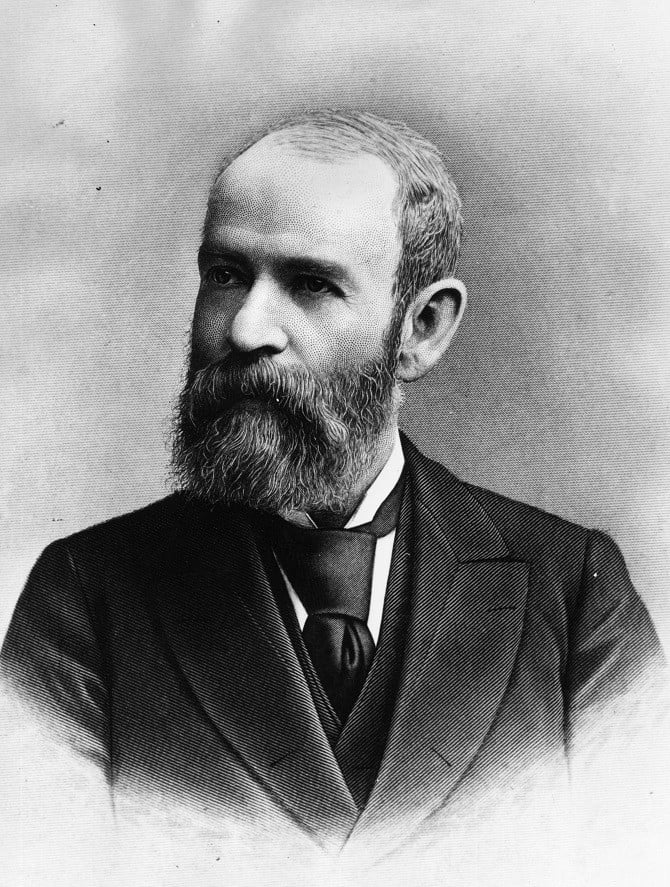What was Jay Gould's Net Worth?
Jay Gould was an American railroad magnate and speculative investor who had an inflation-adjusted net worth of $71 billion at the time of his death. He is generally considered one of the richest Americans of all time. Jay Gould created a family dynasty in the late 19th century. At its peak, his empire consisted of such railroads as the Union Pacific, the Denver and Rio Grande, the Missouri Pacific, the Texas Pacific, and the Western Maryland. Due to his corrupt business practices, which often involved market manipulation, Gould became known as one of the robber barons of the Gilded Age.
Early Life and Education
Jay Gould was born as Jason Gould on May 27, 1836 in Roxbury, New York to Mary and John. Growing up in poverty, he worked on his family's small dairy farm. Gould was educated at the Hobart Academy, which he paid for by doing bookkeeping for a blacksmith.
Career Beginnings
In the 1850s, Gould became heavily engaged in the private study of surveying, cartography, and mathematics. This resulted in his book "History of Delaware County, and Border Wars of New York," which was published in 1854. Meanwhile, Gould became involved in financing, specifically for operators who made wood ash for tanning. In 1856, he began a partnership with Zadock Pratt to start a tanning business of their own in Pennsylvania. After buying out Pratt, Gould started a partnership with preeminent leather merchant Charles Mortimer Leupp. Initially successful, the partnership fell apart during the Panic of 1857, with Leupp losing all of his money. Gould took advantage of the depreciation in property value during this time and purchased former partnership properties. He was later believed to have cheated Leupp and his family. Among his other early business ventures, Gould had an ice harvesting business on Gouldsboro Lake in Pennsylvania, which he used to supply New York City with ice during the summer.

Hulton Archive/Getty Images
Railroad Investing
In 1859, Gould began purchasing stock in small railways. He continued this activity during the Civil War, and in 1863 was made manager of the Rensselaer and Saratoga Railroad. At the end of the 1860s, Gould engaged in financial manipulations with James Fisk in order to prevent rival railroad magnate Cornelius Vanderbilt from taking over their interests. Gould and Fisk conspired to purchase gold so they could illegally corner the market, with Gould influencing President Ulysses S. Grant via contacts with his brother-in-law Abel Corbin. This activity led to the Black Friday financial crisis of 1869. Gould and Fisk ultimately avoided prosecution for their corruption, but the financial havoc they created spelled disaster for everyone from farmers to Wall Street executives.
Gould got into more trouble in 1873 when he attempted to take over the Erie Railroad by bribing Britain's Lord Gordon-Gordon for $1 million in stock. Gordon-Gordon turned out to be an impostor, and he cashed the stock. After a trial, he fled to Canada. In response, Gould and his associates kidnapped Gordon-Gordon, but were arrested before they could reenter the United States. An international dispute between Canada and the US ensued, ending with negotiations that saw the release of Gould and his men on bail. In the wake of that incident, Gould began building a system of railroads in the Midwestern and Western US. He took control of the Union Pacific, the Missouri Pacific, and the Denver and Rio Grande, among other railroads, and by 1882 had a controlling interest in 15% of the railway tracks in the US.
Personal Life and Death
In 1863, Gould married Helen Miller. Together, they had six children: George I, Edwin I, Helen, Howard, Anna, and Frank. Most of their children became involved in finance, railroads, or philanthropy. With his eldest son, George, Gould was a founding member of the American Yacht Club.
On December 2, 1892, Gould died from tuberculosis in New York City. He was buried at Woodlawn Cemetery in the Bronx. Gould's fortune was willed entirely to his family.
/2014/06/Jay-Gould.jpg)
/2014/01/corn.jpg)
/2013/12/jg-1.jpg)
/2014/01/sg-1.jpg)
/2024/04/jesse-livermore-1.jpg)
/2021/03/Andrew-Carnegie.jpg)
/2020/02/Angelina-Jolie.png)
/2019/10/denzel-washington-1.jpg)
/2018/03/GettyImages-821622848.jpg)
/2017/02/GettyImages-528215436.jpg)
:strip_exif()/2015/09/GettyImages-476575299.jpg)
/2009/11/George-Clooney.jpg)
/2009/09/Jennifer-Aniston.jpg)
/2009/09/Brad-Pitt.jpg)
/2019/11/GettyImages-1094653148.jpg)
/2020/06/taylor.png)
/2020/01/lopez3.jpg)
/2014/06/Jay-Gould.jpg)
/2014/01/corn.jpg)
/2015/05/thumb6.jpg)
/2014/03/richest.jpg)
/2021/03/Andrew-Carnegie.jpg)
/2014/09/John-D.-Rockefeller.jpg)
/2021/07/GettyImages-3329759.jpg)
/2019/04/rr.jpg)
:strip_exif()/2009/09/P-Diddy.jpg)
/2020/04/Megan-Fox.jpg)